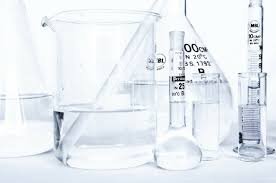“Classification and Calibration of Glassware: Understanding Class A and Class B Standards”

Classification and Calibration of Glassware: Understanding Class A and Class B Standards
Glassware used in laboratories is essential for conducting precise measurements, and its accuracy is crucial in experiments, especially when dealing with chemicals and reagents. To ensure precision, glassware is classified into different categories based on its manufacturing tolerance and calibration. The two main classifications used for laboratory glassware are Class A and Class B. Here’s a detailed explanation of both:
1. What is Glassware Calibration?
Calibration of glassware refers to the process of adjusting the glassware to ensure that it provides accurate measurements. This involves verifying the volume that the glassware measures and ensuring that it meets established standards. Calibration is important to maintain precision and to ensure that the measurements are consistent and accurate, especially in experiments that require high precision.
2. What are Class A and Class B Glassware?
Class A and Class B glassware refer to different levels of accuracy and precision in the measurement of liquid volumes. These classifications are regulated by standards such as the American Society for Testing and Materials (ASTM) and ISO.
Class A Glassware
-
Higher Precision: Class A glassware is manufactured to the highest standards of accuracy and precision. It has very tight tolerances, meaning the glassware is calibrated to be highly accurate in measuring volumes.
-
Applications: It is typically used in experiments where high precision is required, such as in quantitative analysis, titration, and standard preparations.
-
Tolerance: Class A glassware has strict tolerances (meaning the actual volume may differ from the nominal volume by a very small amount). For example, a Class A 500 mL volumetric flask is designed to be within ±0.1 mL of the true volume.
-
Certification: Class A glassware is often certified, meaning it has been calibrated and tested to meet the required standards. It is ideal for use when absolute accuracy is necessary.
Common Examples of Class A Glassware:
-
Volumetric flasks
-
Burettes
-
Pipettes
-
Graduated cylinders
-
Measuring flasks
Class B Glassware
-
Lower Precision: Class B glassware is still reliable, but it is manufactured with less precision than Class A glassware. The tolerances for Class B glassware are wider, meaning it may have a slight variation from the true volume, but it is generally considered acceptable for less critical applications.
-
Applications: Class B glassware is used in general laboratory work where exact measurements are not as crucial, such as in routine preparation of solutions, non-critical measurements, or in cases where high accuracy is not paramount.
-
Tolerance: Class B glassware has wider tolerances than Class A. For instance, a Class B 500 mL volumetric flask may have a tolerance of ±0.2 mL, indicating a slightly larger margin of error.
-
Certification: Class B glassware is typically not certified. The measurements are adequate for many laboratory tasks, but it does not undergo the same rigorous testing or calibration that Class A glassware does.
Common Examples of Class B Glassware:
-
Graduated cylinders
-
Beakers
-
Some types of flasks
3. Differences Between Class A and Class B Glassware
| Feature | Class A Glassware | Class B Glassware |
|---|---|---|
| Precision | High accuracy and tight tolerances | Lower accuracy, wider tolerances |
| Tolerance | Very small deviation from the nominal volume | Greater deviation allowed |
| Applications | Used in high-precision applications | Used for routine measurements |
| Certification | Typically certified after calibration | Not usually certified |
| Cost | Generally more expensive | Less expensive |
| Common Types | Volumetric flasks, burettes, pipettes | Graduated cylinders, beakers, flasks |
4. Calibration Process
The calibration process of glassware, whether Class A or Class B, typically involves the following steps:
-
Cleaning: The glassware must be thoroughly cleaned before calibration to avoid any contamination that could affect the measurement.
-
Filling with a Standard Liquid: A known volume of distilled water or another calibration liquid is used. The liquid’s temperature is taken into account, as water expands and contracts with temperature.
-
Measuring: The glassware is filled to the specified mark, and the volume is measured using a highly accurate instrument, such as a balance or another calibrated volumetric device.
-
Adjustment: If necessary, the glassware is adjusted, and the calibration mark is confirmed or altered to match the exact volume.
5. Importance of Class A and Class B Glassware
-
Accuracy in Scientific Research: For accurate data in scientific experiments, especially in analytical chemistry and pharmaceutical research, using Class A glassware is critical. The precision of these measurements can determine the outcome of an experiment.
-
Cost Efficiency: Class B glassware is more cost-effective and may suffice for routine tasks that do not require the level of precision that Class A glassware provides.
-
Compliance with Standards: In industries such as pharmaceuticals, food production, and environmental testing, using the appropriate glassware ensures compliance with industry standards and regulations.
Conclusion
The classification of glassware into Class A and Class B is essential for ensuring that the correct type of glassware is used for the appropriate task. Class A glassware is suitable for high-precision measurements, while Class B glassware is appropriate for more routine tasks where the highest level of precision is not as critical. Both classes of glassware play crucial roles in scientific and laboratory work, and their calibration ensures that measurements remain accurate and reliable.
🎓 Discover one of the best Quality Assurance courses available — click below to explore the course that’s shaping future QA skills.

